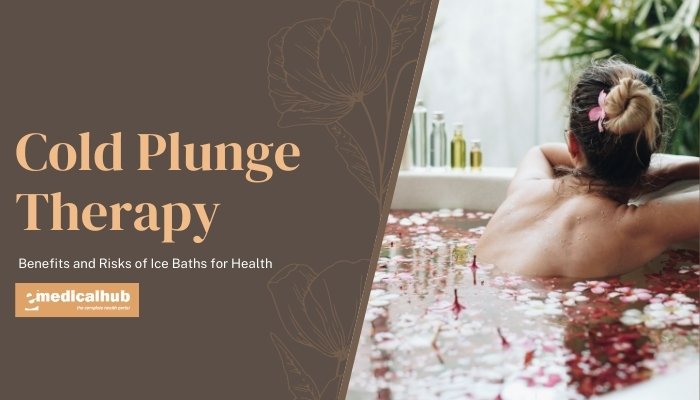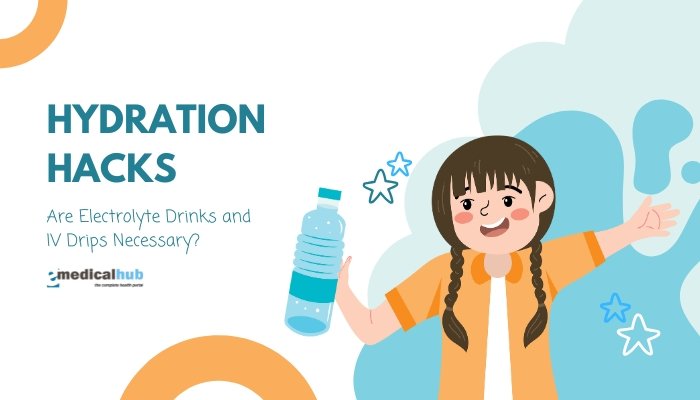Introduction
Cold plunge therapy—commonly known as ice baths—is rapidly gaining popularity as a recovery and wellness modality among athletes, fitness enthusiasts, and individuals seeking a natural approach to boost overall health.

This therapy involves immersing the body in cold water, typically between 50°F to 59°F (10°C to 15°C), for a set period. Proponents claim that the practice reduces inflammation, accelerates recovery, improves mood, and even boosts immune function. However, like many trending therapies, cold plunge therapy comes with potential risks and is not suitable for everyone.
This article provides a comprehensive overview of cold plunge therapy. We will discuss its history, the physiological mechanisms behind its effects, the potential benefits and risks, practical guidelines for safe use, and frequently asked questions.
Whether you are considering incorporating ice baths into your recovery regimen or simply curious about this emerging trend, read on to understand whether cold plunge therapy can genuinely boost your health or if it might be more hype than help.
Disclaimer: The information in this article is for educational purposes only and does not substitute for professional medical advice. Consult a qualified healthcare provider before beginning cold plunge therapy, especially if you have underlying health conditions such as cardiovascular disease or circulatory issues.
What Is Cold Plunge Therapy?
Definition and Overview
Cold plunge therapy involves submerging the body in cold water for a short period, typically 5 to 10 minutes. Unlike traditional cold water immersion, which may be used for general cooling after workouts, cold plunge therapy is a deliberate practice aimed at harnessing the benefits of cold exposure for health and recovery.
- Temperature Range: Most ice baths are maintained at 50°F to 59°F (10°C to 15°C).
- Duration: Typical sessions last between 5 to 10 minutes, though durations may vary based on individual tolerance and experience.
- Frequency: Regular practitioners might incorporate ice baths 2-3 times per week, depending on their fitness regimen and recovery needs.
Historical Context
Cold exposure therapies have been practiced for centuries across various cultures:
- Ancient Traditions: In ancient Greece and Rome, cold water was used as a natural remedy to invigorate the body and promote healing.
- Modern Adaptation: Today, athletes and wellness enthusiasts use ice baths as a recovery tool to reduce muscle soreness and inflammation, while also exploring their potential mental health benefits.
- Cultural Variations: Practices such as the Finnish tradition of sauna followed by a plunge in icy water highlight the longstanding cultural appreciation for cold therapy.
How It Works
Cold plunge therapy works by exposing the body to low temperatures, which triggers several physiological responses:
- Vasoconstriction: Blood vessels constrict to reduce blood flow, which can help decrease inflammation and swelling.
- Metabolic Boost: The body expends energy to maintain core temperature, potentially increasing calorie burn.
- Nervous System Activation: Cold exposure stimulates the release of endorphins and activates the sympathetic nervous system, leading to improved mood and alertness.
- Reduction in Muscle Soreness: By reducing inflammation and muscle damage, cold plunges can help speed up recovery after intense physical activity.
Physiological Mechanisms and Health Benefits
Inflammation and Recovery
Anti-Inflammatory Effects
- Vasoconstriction and Vasodilation: Cold immersion causes vasoconstriction (narrowing of blood vessels), followed by vasodilation (widening) upon exiting the cold water. This process helps flush out metabolic waste and deliver fresh oxygenated blood to muscles.
- Reduction in Cytokines: Some research suggests that cold exposure may lower levels of inflammatory cytokines, which are linked to muscle soreness and tissue damage.
Enhanced Recovery
- Muscle Repair: Cold plunges can reduce muscle damage and accelerate the repair process, making them popular among athletes.
- Decreased Delayed Onset Muscle Soreness (DOMS): By limiting inflammation, ice baths may help reduce the severity of DOMS, allowing for quicker recovery between workouts.
Cardiovascular and Metabolic Responses
Cardiovascular Benefits
- Improved Circulation: The alternating process of vasoconstriction and vasodilation may improve overall blood flow.
- Heart Rate Variability (HRV): Regular cold exposure may enhance HRV, an indicator of good cardiovascular health and stress resilience.
Metabolic Effects
- Increased Calorie Expenditure: The body’s efforts to warm itself can lead to a modest increase in metabolism.
- Brown Fat Activation: Exposure to cold may stimulate the activation of brown adipose tissue (BAT), which burns calories to generate heat.
Mental Health and Mood Enhancement
Endorphin Release
- Mood Boost: The shock of cold water triggers the release of endorphins, often referred to as “feel-good” hormones.
- Reduced Stress Levels: Regular cold exposure can help lower cortisol levels, leading to reduced stress and anxiety.
Improved Mental Clarity
- Sympathetic Activation: The initial shock activates the sympathetic nervous system, increasing alertness and focus.
- Mindfulness and Resilience: Many practitioners report a sense of accomplishment and increased mental resilience after regular cold plunge sessions.
Potential Risks and Considerations
Cardiovascular Risks
- Heart Stress: Sudden exposure to cold can cause a rapid increase in heart rate and blood pressure, which might be dangerous for individuals with heart conditions.
- Arrhythmias: In rare cases, the stress of cold exposure can trigger irregular heart rhythms.
Hypothermia and Cold Shock
- Risk of Hypothermia: Prolonged exposure to cold water can lower body temperature dangerously, especially if the duration exceeds recommended limits.
- Cold Shock Response: An immediate, involuntary gasp and rapid breathing can occur, potentially leading to hyperventilation or panic in some individuals.
Skin and Nerve Concerns
- Frostbite: Although rare in controlled ice baths, extreme cold exposure without proper precautions can damage the skin and underlying tissues.
- Nerve Sensitivity: Repeated cold exposure might lead to temporary numbness or tingling in the extremities.
Who Should Avoid or Exercise Caution
- Cardiac Patients: Those with heart disease, hypertension, or other cardiovascular conditions should consult their doctor before attempting cold plunge therapy.
- Pregnant Women: Although evidence is limited, it’s generally recommended to avoid extreme temperature exposures during pregnancy.
- Individuals with Raynaud’s Disease: Those prone to vasospasm in response to cold should exercise caution.
Practical Guidelines for Safe Cold Plunge Therapy
Preparing for an Ice Bath
- Check the Temperature: Aim for water between 50°F and 59°F (10°C to 15°C). Use a thermometer to ensure accuracy.
- Set a Timer: Start with short durations (e.g., 2-3 minutes) and gradually build up to 5-10 minutes as your tolerance increases.
- Warm-Up: Engage in light physical activity beforehand to raise your core temperature slightly.
- Hydration: Drink water before and after your plunge to support circulation and recovery.
During the Plunge
- Stay Calm: Focus on slow, controlled breathing to reduce the shock response.
- Monitor Your Body: If you feel dizzy, excessively uncomfortable, or experience pain, exit the water immediately.
- Submerge Gradually: Ease into the cold water slowly to allow your body to adjust to the temperature.
Post-Plunge Recovery
- Warm Up Gradually: After exiting the bath, wrap yourself in warm towels or a robe. Avoid jumping into a hot shower immediately; instead, allow your body to warm up naturally.
- Light Movement: Gentle stretching or a brief walk can help restore circulation.
- Monitor Your Health: Pay attention to any lingering numbness, shivering, or discomfort, and seek medical advice if these symptoms persist.
Comparative Table: Cold Plunge vs. Other Recovery Modalities
| Factor | Cold Plunge Therapy | Contrast Therapy (Hot/Cold Showers) | Active Recovery (Light Exercise) |
| Primary Mechanism | Vasoconstriction/vasodilation cycle | Alternating heat and cold for circulation | Increased blood flow via movement |
| Duration | 5-10 minutes | 10-15 minutes (alternating cycles) | 15-30 minutes of low-intensity activity |
| Cost | Moderate (equipment: tub, ice) | Low (using shower facilities) | Low (no equipment needed) |
| Risk of Overexposure | Moderate (risk of hypothermia) | Lower risk if properly managed | Minimal risk |
| Suitability for Athletes | Popular for reducing DOMS and recovery | Commonly used; less intense than cold plunge | Ideal for overall recovery |
| Mental Benefits | Endorphin release, stress reduction | Gradual relaxation, improved mood | Enhanced circulation and recovery |
Frequently Asked Questions (FAQ)
What exactly is cold plunge therapy?
Cold plunge therapy involves immersing the body in cold water, typically between 50°F and 59°F, for a short duration to trigger physiological responses like vasoconstriction and reduced inflammation.
What are the main health benefits of cold plunge therapy?
Benefits include reduced inflammation, improved circulation, accelerated muscle recovery, increased energy expenditure, and potential mental health benefits such as stress reduction and enhanced mood.
How long should I stay in an ice bath?
Beginners should start with 2-3 minutes and gradually increase to 5-10 minutes based on tolerance and safety.
Who should avoid cold plunge therapy?
Individuals with cardiovascular conditions, pregnant women, those with Raynaud’s disease, and anyone sensitive to extreme cold should consult a healthcare provider before attempting cold plunge therapy.
Can cold plunge therapy help with weight loss?
While it may slightly boost metabolism through increased calorie expenditure and brown fat activation, cold plunge therapy should not be viewed as a standalone weight loss strategy.
Is there scientific evidence supporting the benefits of ice baths?
Yes, several studies have indicated benefits such as reduced muscle soreness, improved recovery, and enhanced circulation. However, research is ongoing, and results can vary.
What are the risks of cold plunge therapy?
Potential risks include cardiovascular stress, hypothermia, frostbite (if exposure is excessive), and temporary numbness or discomfort in the extremities.
How can I prepare for a cold plunge session?
Ensure the water is at the correct temperature, use a timer, warm up lightly before the session, and hydrate adequately. Ease into the water slowly and focus on controlled breathing.
Should I immediately warm up after a cold plunge?
It’s best to warm up gradually using warm towels or gentle movement rather than jumping into a hot shower immediately to allow your body to adjust.
Can athletes benefit from cold plunge therapy?
Many athletes use ice baths to reduce muscle soreness and accelerate recovery after intense workouts. The therapy can help decrease inflammation and improve circulation.
How frequently should I use cold plunge therapy?
Frequency varies based on individual needs and fitness goals. Some people use it 2-3 times per week as part of their recovery regimen, while others may incorporate it less frequently.
Are there alternatives to ice baths for recovery?
Yes. Alternatives include contrast therapy (alternating hot and cold showers), active recovery (light exercise), and compression garments. The best method depends on personal preference and specific recovery needs.
Conclusion
Cold plunge therapy, or ice baths, has emerged as a popular method for enhancing physical recovery, reducing inflammation, and even boosting mental resilience. By triggering a series of physiological responses—from vasoconstriction and vasodilation to endorphin release—this practice offers a range of potential health benefits. For athletes, it can mean faster recovery and reduced muscle soreness, while for others it may promote improved circulation and stress relief.
However, the practice is not without its risks. Individuals with cardiovascular conditions, sensitivity to cold, or other health issues should exercise caution and seek professional advice before incorporating cold plunge therapy into their routine. Moreover, while the benefits are supported by some scientific evidence, they are best viewed as part of a comprehensive approach to health that includes proper nutrition, exercise, and adequate rest.
Ultimately, whether you’re an athlete seeking a recovery boost or someone looking to reduce everyday stress, cold plunge therapy can be a valuable tool—if used wisely and safely. By following practical guidelines, monitoring your body’s response, and integrating this practice into a balanced wellness plan, you may harness the transformative benefits of cold exposure for a healthier, more resilient life.
References
- Bleakley CM, Davison GW. What is the biochemical and physiological rationale for using cold-water immersion in sports recovery? A systematic review. Br J Sports Med. 2010;44(3):179-187.
- Higgins TR, et al. Cold water immersion: physiological responses and potential mechanisms for recovery. Sports Med. 2017;47(3): 391-403.
- Vaile J, et al. Effect of cold water immersion on indices of recovery following prolonged intermittent exercise. Eur J Appl Physiol. 2008;102(4): 449-457.
- Leeder J, et al. Cold water immersion and recovery from strenuous exercise: a meta-analysis. Br J Sports Med. 2012;46(4):233-240.
- Ihsan M, et al. Post-exercise cold-water immersion attenuates neuromuscular fatigue and promotes recovery. Eur J Appl Physiol. 2016;116(4): 691-699.
- Costello JT, et al. Effects of whole-body cryotherapy on recovery from exercise-induced muscle damage: a systematic review and meta-analysis. Sports Med. 2015;45(2): 169-186.
- Hohenauer E, et al. The effect of post-exercise cryotherapy on recovery: a meta-analysis. PLoS One. 2015;10(9):e0139028.
- Higgins TR, et al. The effect of cold water immersion on immune function following exercise: a systematic review. J Sports Sci Med. 2018;17(3): 396-405.
- Wilson MJ, et al. Brown adipose tissue activation and cold exposure in athletes: a review. J Strength Cond Res. 2014;28(9): 2572-2579.
- Yamada S, et al. Effects of cold exposure on the human immune system: a systematic review. Scand J Med Sci Sports. 2019;29(5): 690-701.
- Lombardi G, et al. Physiological responses to cold water immersion after exercise: implications for recovery. Eur J Appl Physiol. 2017;117(3): 443-452.
- Tipton MJ, et al. Cold stress and human performance: practical and mechanistic insights from recent research. Sports Med. 2014;44(1): 21-38.






